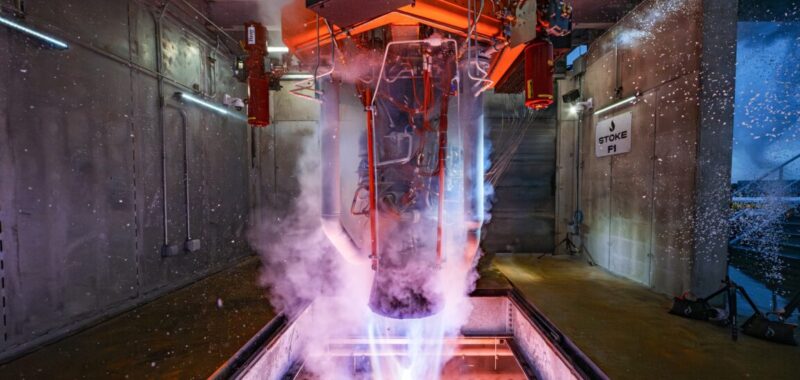The company continues to make technical progress, Lapsa said.
A few weeks ago, Stoke successfully tested the Nova rocket’s main engine, Zenith, in a vertical position. Lapsa said the company will probably make one more iterative block change on the Zenith engine before it gets into a “nice, tight” flight configuration. Similarly, the second stage engine has gone through a design upgrade to get it ready for flight. After the engines are complete, the company will assemble a flight vehicle and put it through the final phases of testing.
Pads and permitting
At the same time, Stoke is working to complete construction at Launch Complex 14 at Cape Canaveral Space Force Station in Florida and finalize environmental permitting for launches from there.
“We’re pushing really hard to have the pad ready, and it will be activated well before the end of the year,” Lapsa said. “And the vehicle will be right there with it.”
Historically, it’s unlikely for a company to move from engine testing to a first orbital launch attempt in the same year, so a Nova debut in 2026 seems more likely. Nevertheless, the new funding from investors signals confidence that Stoke is making credible technical progress on its vehicle development.
The space capital market has changed significantly since Stoke was founded by Lapsa and Tom Feldman in 2020. At the time, there were dozens of US launch companies at work on small- and medium-lift vehicles. Today, arguably, there are just half a dozen credible US-based entities developing medium-lift rockets.
“It’s a very different conversation with investors than it was five years ago,” Lapsa said.
The winnowing of competitors is also a stark reminder of both the technical and financial challenges of operating a launch company.

